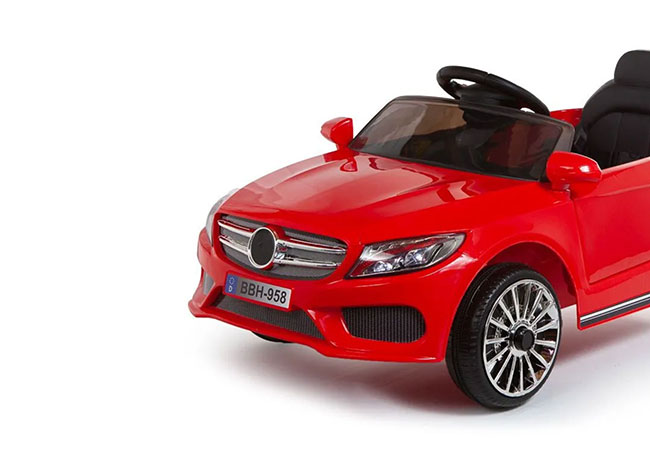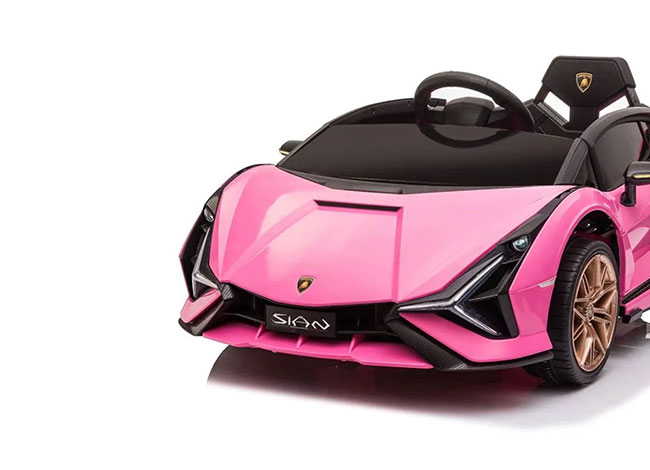Over the past few years, electric cars designed for kids have gained immense popularity as a fun way to keep children active and away from electronic devices.
When purchasing an electric car for your child, it’s crucial to understand the varying voltage levels available, specifically 6v, 12v, and 24v. Each voltage level offers distinct features and capabilities and selecting the appropriate one that suits your child’s age and abilities is vital.
This article will outline the differences between the 6v, 12v, and 24v electric car models, including their speed, power, and safety considerations. This way, you can make an informed choice when purchasing an electric car for your little one.
What’s in this guide
- A 6v kids ride on car typically has a fastest speed of 2-3 mph.
- A 12v ride on car has a fastest speed of around 5-6mph.
- 24v kids ride on cars have a fastest speed of up to 8mph on a smooth flat surface.
- 12v kids ride on cars vs 24v ride on cars are smaller, slower, charge faster and are cheaper.
How Fast do Power Wheels Go?
Power Wheels can go as fast as 8mph, depending on the ride on car’s battery size. Generally speaking, the higher the battery voltage, the faster a kid’s ride-on vehicle can go. A 6v Power Wheels typically has a maximum speed of 2-3mph, while a 12v Power Wheels can reach speeds of up to 5-6mph. A 24v Power Wheels, on the other hand, can go even faster with maximum speeds of up to 8mph.
It’s important to note that the car’s speed can also depend on other factors such as weight, terrain, and weather conditions.
This table provides a side-by-side comparison of the maximum speeds of 6v, 12v, and 24v toys:
| Voltage | Max Speed |
|---|---|
| 6v | 2-3 mph |
| 12v | 3-5 mph |
| 24v | 4-8 mph |
What are 6v Kid’s Ride-On Cars?
6v ride-on cars are ideal for children aged 2-4, as they are slower, smaller, and safer than 12v vehicles. They have a weight limit of 20-25 kg and have fun features such as LED lights, horns, and MP3 music players. These toys have a maximum speed of 2-3 mph and take less time to charge, with the first charge taking 10 hours and subsequent charges requiring 8 hours.
What are 12v Kid’s Ride-On Cars?
12v cars are suitable for indoor and outdoor driving; however, without EVA rubber tyres (which stands for Ethylene Vinyl Acetate), they may struggle with steep climbs and wet surfaces outside.
With double the amount of cells as 6-volt cars, 12v ride-on toys produce greater power and generally provide one hour of continuous driving from a single charge.
Kid’s 12v ride-on cars are a fantastic upgrade from 6v vehicles. Offering higher speeds and more fun they come in various designs, making it easy to find one that appeals to your child. With a higher battery capacity, 12v toys have a maximum speed of 5-6 mph and take longer to charge, with each cycle taking 10 hours. The battery usually lasts for around 1 hour of continuous driving.
What are 24v Kids Ride On Cars?
Equipped with exciting features such as LED headlights, MP3 players, EVA rubber tyres, and realistic engine sounds, these 24v cars are perfect for indoor and outdoor use. They can tackle challenging terrains with ease.
How Fast does a 24v Ride On Go?
24v ride on cars can achieve speeds of up to 8mph on a smooth flat surface. Designed for older children aged between five to nine, 24v electric cars typically run on two 12v batteries with lower power. This results in greater energy efficiency and longer battery life, ensuring your child can play with it for an extended period.
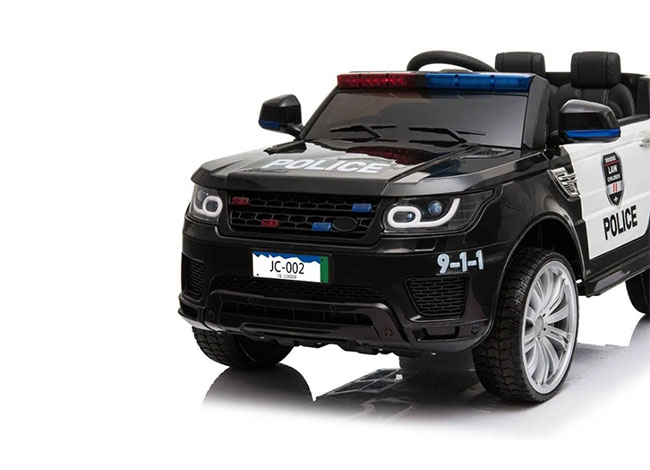
Kids’ 24v ride-on cars are appropriate for ages 3-9. They typically feature two seats, EVA rubber wheels, and attractive designs, such as sports cars and SUVs. They are known for their speed, with a maximum speed of 8 mph, but take longer to charge compared to lower-powered toys. The first charge after purchase requires approximately 10 hours, and subsequent charges take the same time. A fully charged 24v ride-on car usually offers 1 to 1 hour 30 minutes of continuous driving time.
12v vs 24v Ride On Toys
Both 12v and 24v ride on toys offer similar features, but each has its advantages and disadvantages; here’s a quick run-through of the main differences:
- Battery life: 24v cars typically last longer than 12v cars from a single charge.
- Speed: 24v cars tend to have a higher maximum speed than 12v cars.
- Cost: 12v cars cost less than 24v cars. You won’t have to pay as much for a 12v car.
- Size: 12v cars are generally smaller than 24v cars, making them easier to store and transport.
- Safety: 12v cars are safer than 24v cars. The voltage is lower, so the top speed is usually also lower.
- Charging: 12v and 24v take roughly the same time to charge.
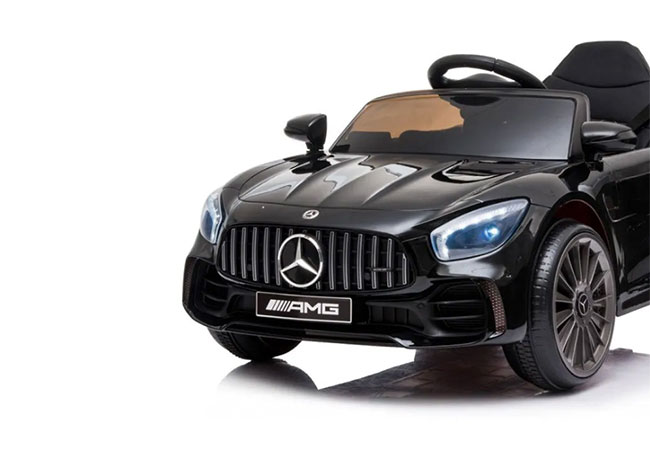
Popular 6v, 12v and 24v Ride On Cars
6v, 12v, and 24v kids’ ride-on cars are available in many sizes and designs, here are our most popular models organised by voltage:
6v kids cars: Vespa scooters and smaller cars.12v kids cars: Range Rovers, Lamborghinis, Tractors and even Bumper Cars!24v kids cars: Larger SUVs and supercars.
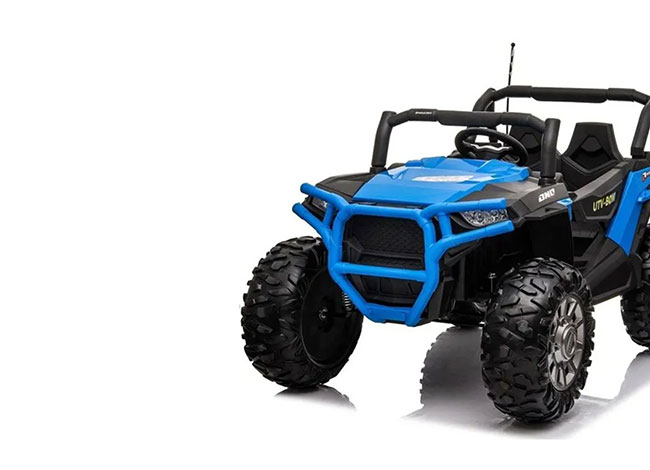
Which Battery Voltage is Right for your Child?
Enter a your kids age, weight and height, and our recommendation calculator will advise which battery voltage is most suitable for them.
About the Author
Hannah Hill
Entrepreneur, and mother of three. Hannah is a toy expert with 20+ years in the online toy industry, founding the Kidaroos website that sells 10,000+ toys per year. Hannah is always looking for new, innovative ways to keep everyone's kids active and energised in a world full of screens and social media and has been featured in publications such as Authority Magazine.
